Here’s a YouTube video:
Search the blog
Lake Kirby Wildflower Walk 2019!
Snout Butterfly Population Explosion – Fall 2018
-
Recent Posts
Categories by Topic
Category Cloud
Archives
Community Visitors
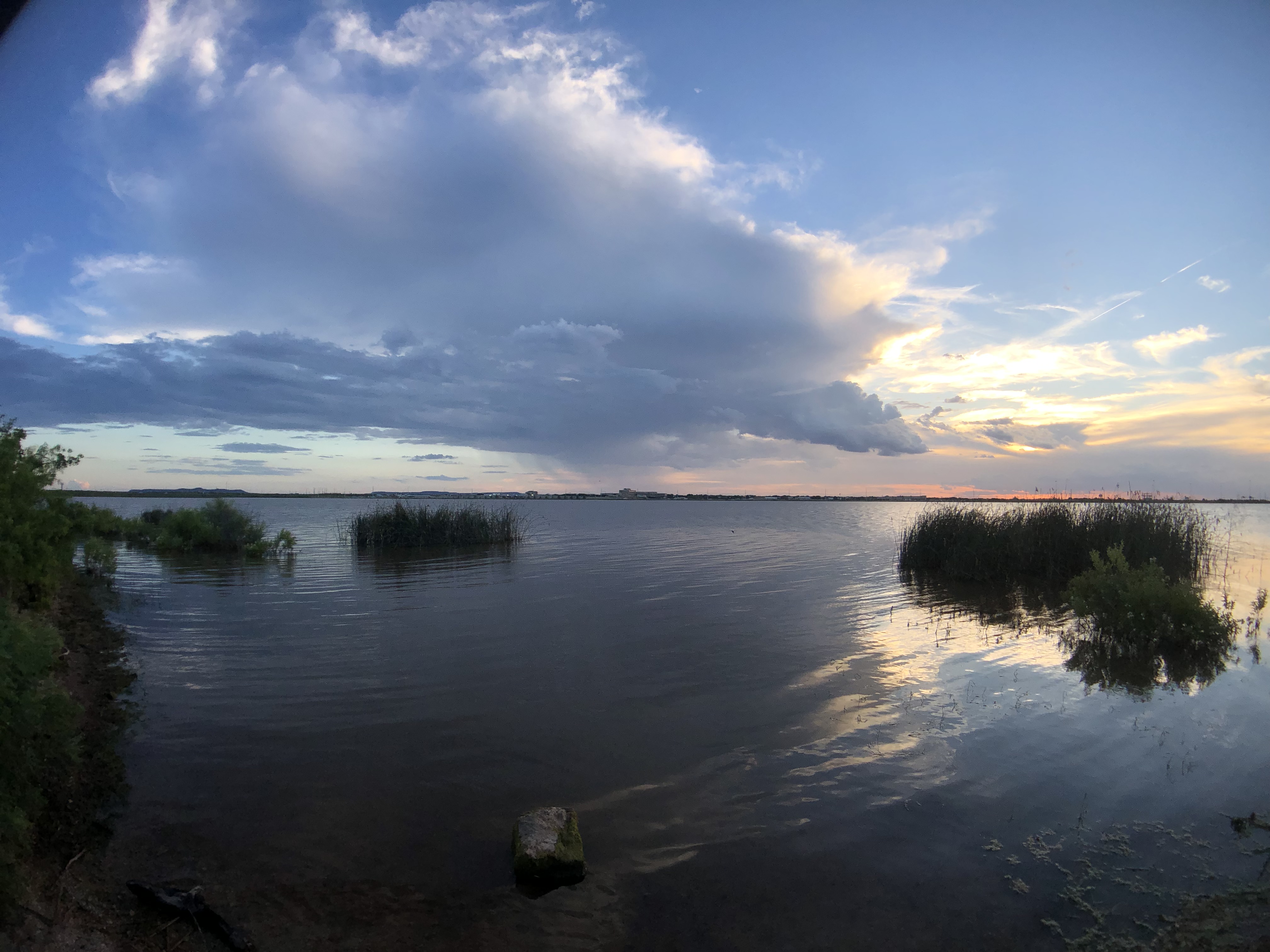
Golden Hour Thunderstorm, looking to the west across the lake. The storm was about 15 miles to the west of the lake. The big clumps of vegetation are bulrushes (Isolepis ssp.). You can see the curtain of rain draping down from the storm clouds. Golden hour precedes sunset, and the light is a little redder and softer than when the sun is higher in the sky. I am constantly fascintaed by natural light, especially early morning and late evening. Here’s another Kirby sunset:

The wonderful thing about any sunset, whether spectacular or not, is that any two are never the same. The clouds along the horizon, the suspended particles in the air, and a host of other atmospheric factors, conspire in a beautifully original combination to produce a one-of-a-kind sunset each and every day. The physics of the atmosphere can paint wonderfully rich tapestries for our human eyes to interpret, appreciate, and enjoy.

Twice-Stabbed Lady Beetles are are hungry, voracious predators that have very strong chewing mouthparts that enable them to chew through the armor covering of many scale insects, which are parasites on plants. This is why Lady Beetles are welcome in the garden.

But why the red spots on a shiny black body? The red and black coloring is likely an advertisement to potential predators that this bug may taste very bad or may even be toxic. In fact, these bugs are known to emit a repulsive smell from their legs. Warning coloration such as this is common in nature and is referred to as aposematic coloration. Think bees and wasps and even the black and white stripes of a skunk! The major predators of these beetles would be small birds and lizards. Here’s your chance to do some observational field ecology and gather some data on the warning coloration hypothesis.

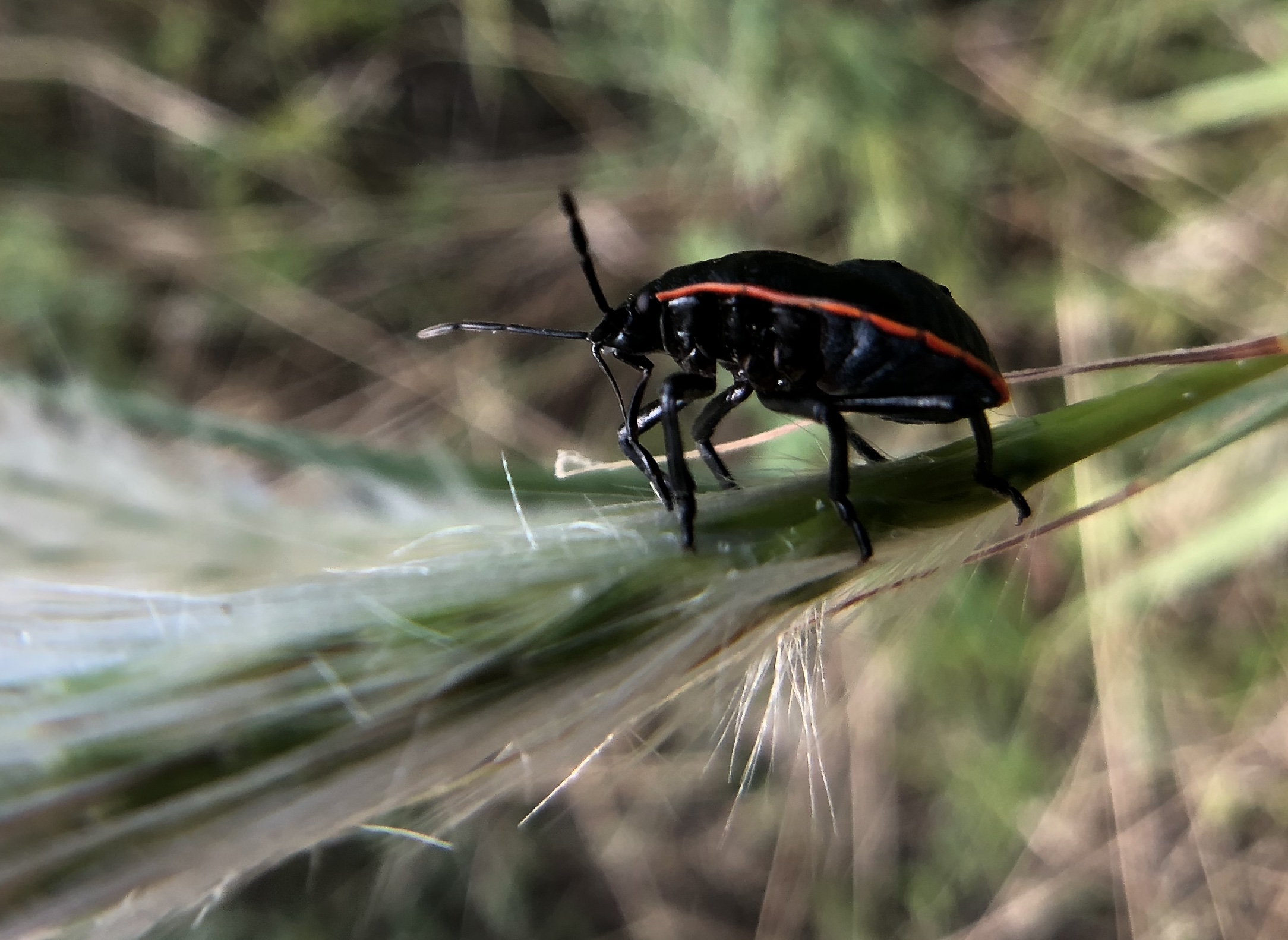
A Conchuela Stinkbug on a flowering branch of Silver Bluestem grass. I have been trying to get a decent photo of this stinkbug for the last week or so at Lake Kirby. Getting a good photo is difficult because the bug is very dark colored and the background is usually much lighter, but my photos turned out okay this time. Just one of the challenges of natural history photography in the field on a sunny day!
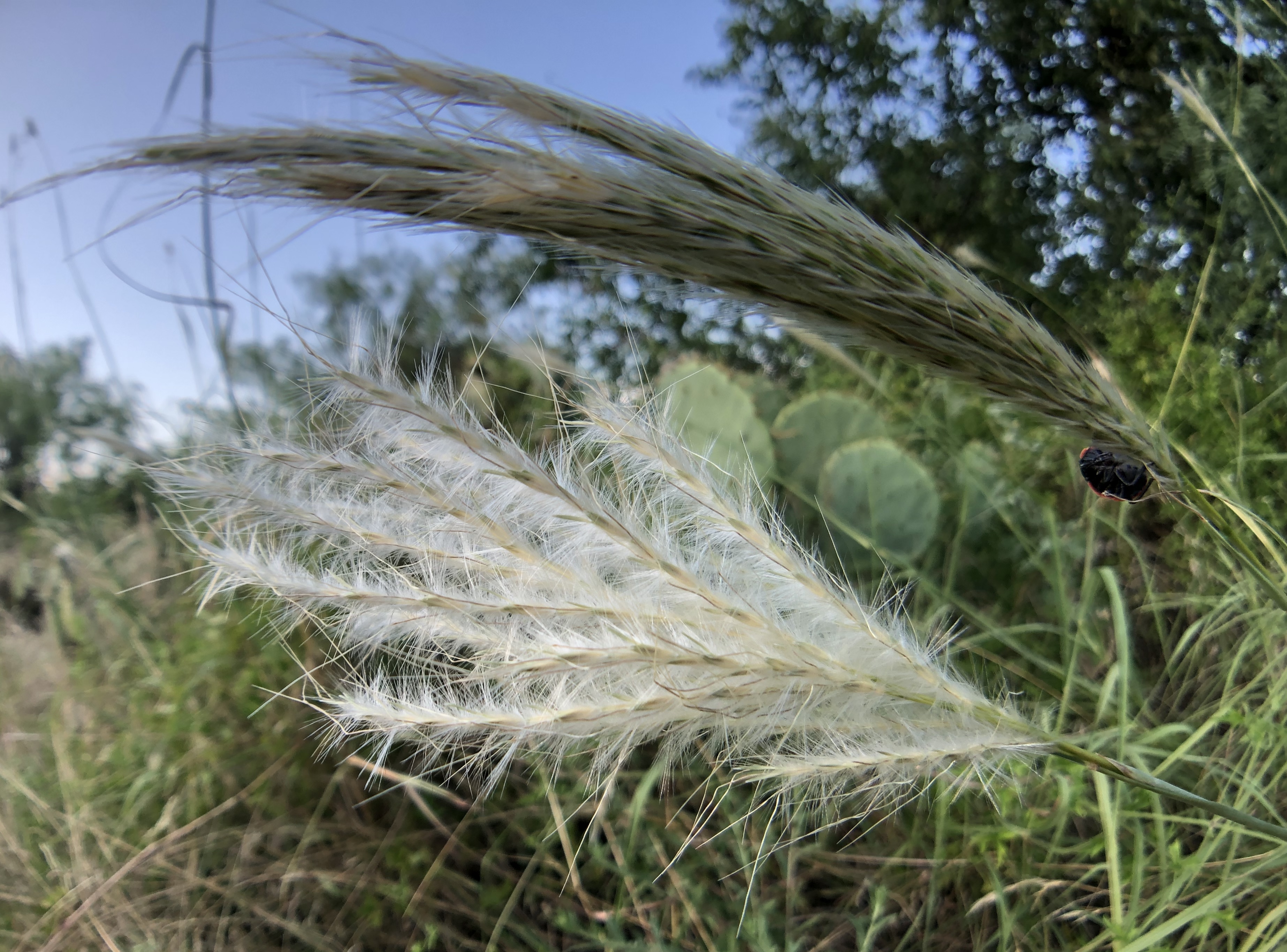
The Bluestem flowering head or panicle is attractive to me even though many landowners only see this plant as an invader species. It’s very common on roadsides all throughout Texas this time of the year.


The first part of the scientific name refers to the resemblance of the flowers to lips. I think I can sort of see this in the above photo. This species is a native of the SW U.S. and Mexico, so it is adapted for our dry climate here in west central Texas.
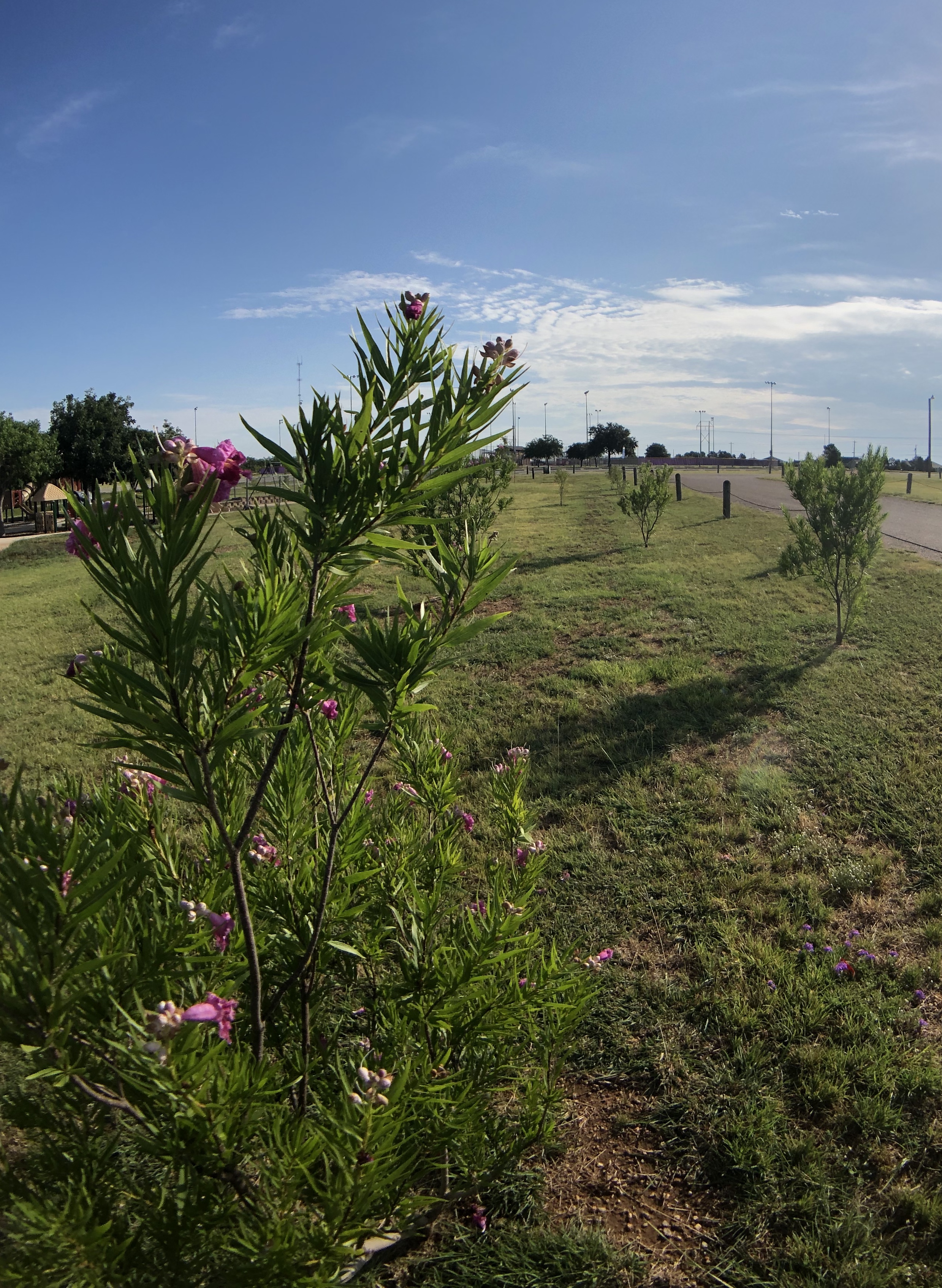
Desert Willow is widely cultivated and is commonly planted along the highways of west Texas.

Other interesting common names include Desert Catalpa and Flor De Mimbre. A member of the Boraginaceae plant family.
Gray Gold-Aster (Heterotheca canescens) and its beautiful flowers is very abundant now at Lake Kirby Nature Park along the dam road and prairie areas. It’s a very common mid-summer into fall species in the sunflower family.

The foliage is grey-silver in appearance, hence the common name.

Songbirds eat the seeds and the many flowers provide nectar for pollinators. It is not palatable to livestock so, from a rancher’s perspective, this is just a native species that crowds out other more desirable plants.
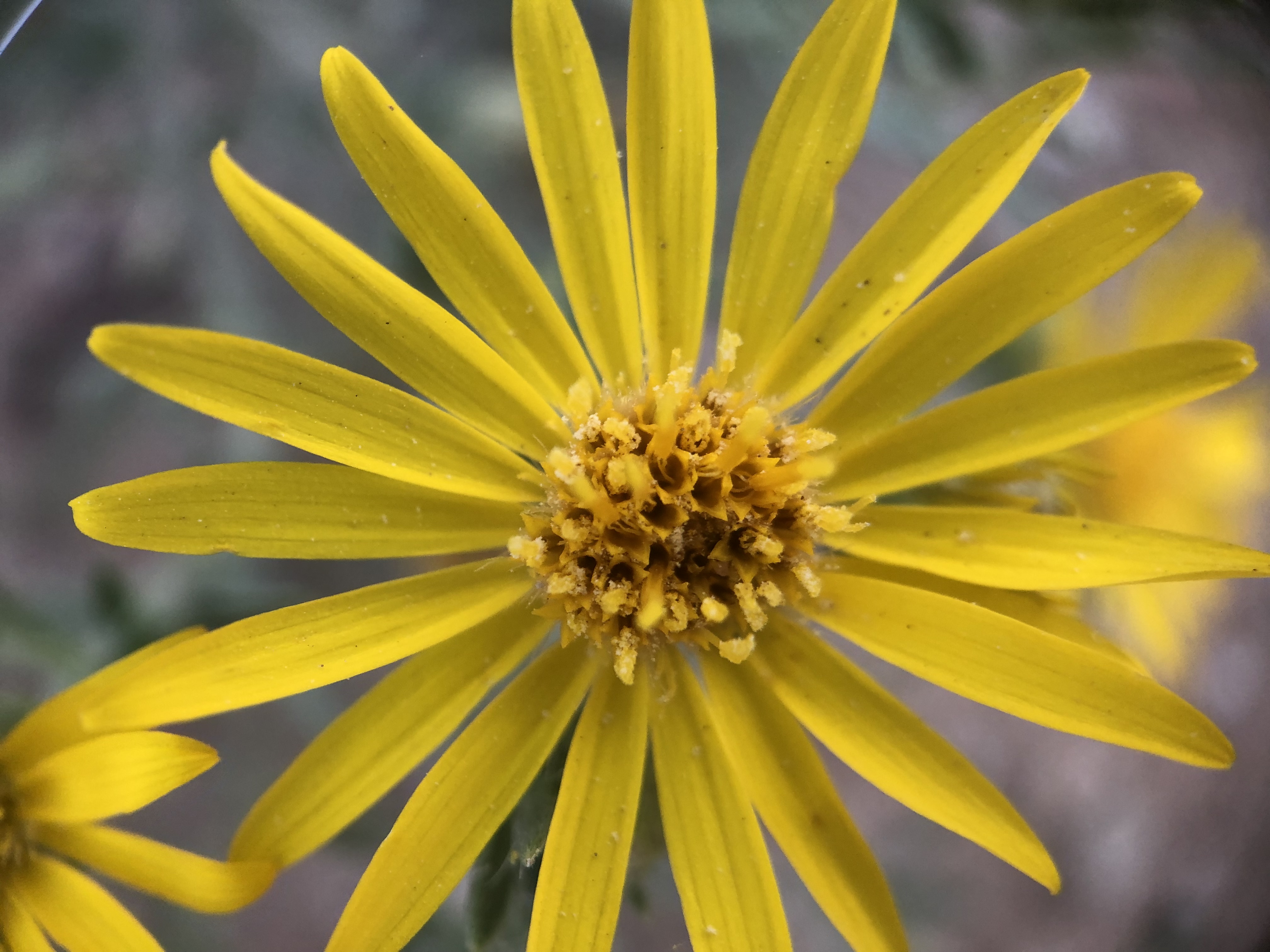
Even so, it’s definitely worth stopping to take a look at to admire the attractive flowers and foliage.
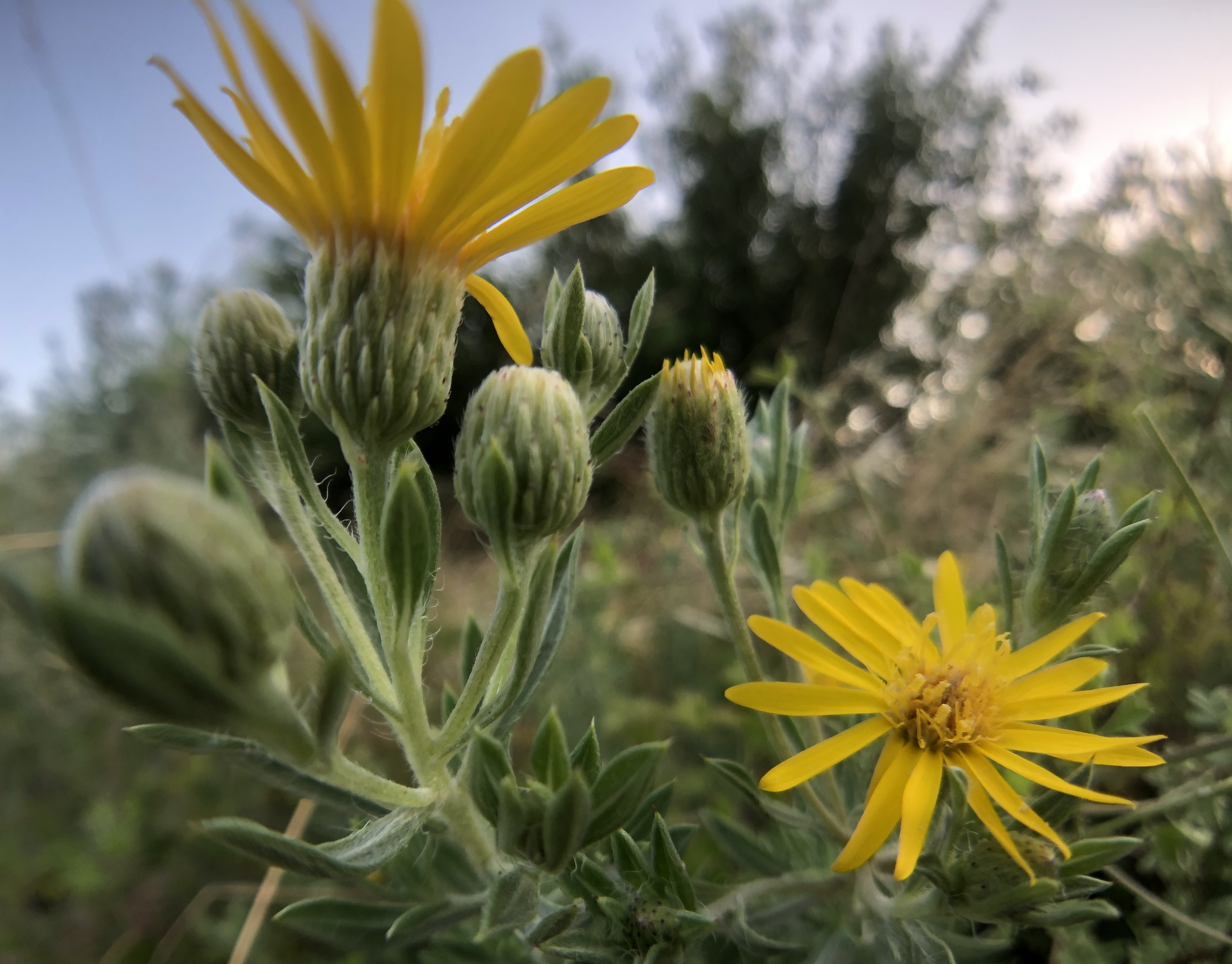
Posted in Plants
Tagged Natural History, Rolling Plains, Sunflower Family, Texas, wildflowers
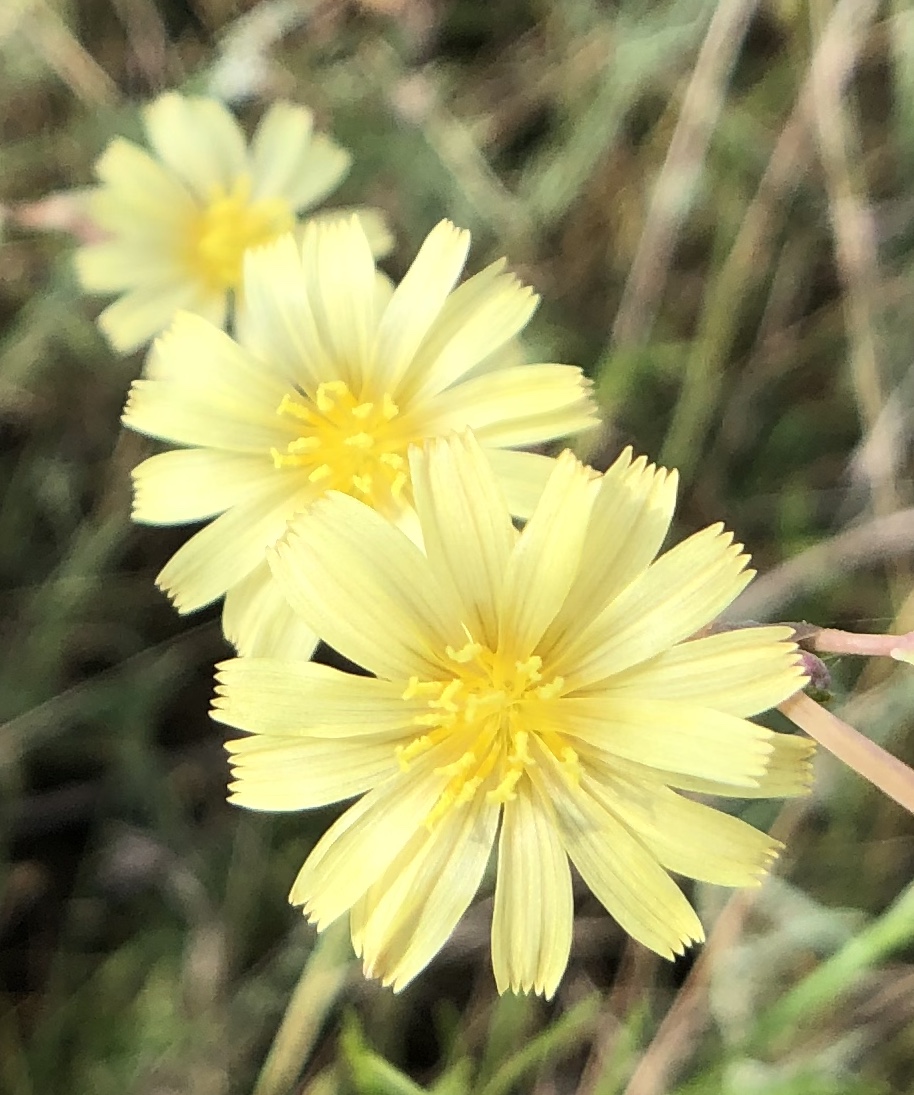
Smaller than a dime across, the tiny flowers of Prickly Lettuce have their own unique beauty. This species is a member of the sunflower family. Your common, edible garden lettuce (a different species) is thought to be derived from Prickly Lettuce.

Prickly Lettuce is a native of the Old World, and like many non-native species, whether plant or animal, seem to become aggressive and too abundant, crowding out many native species. This is typical of what ecologists call a disturbed habitat, whether by land clearing for urban growth and expansion or by fire or storm. Here’s a question: does knowing that this species is a non-native invader lessen your ability to enjoy the beauty of its flowers? I would love to hear your comments!
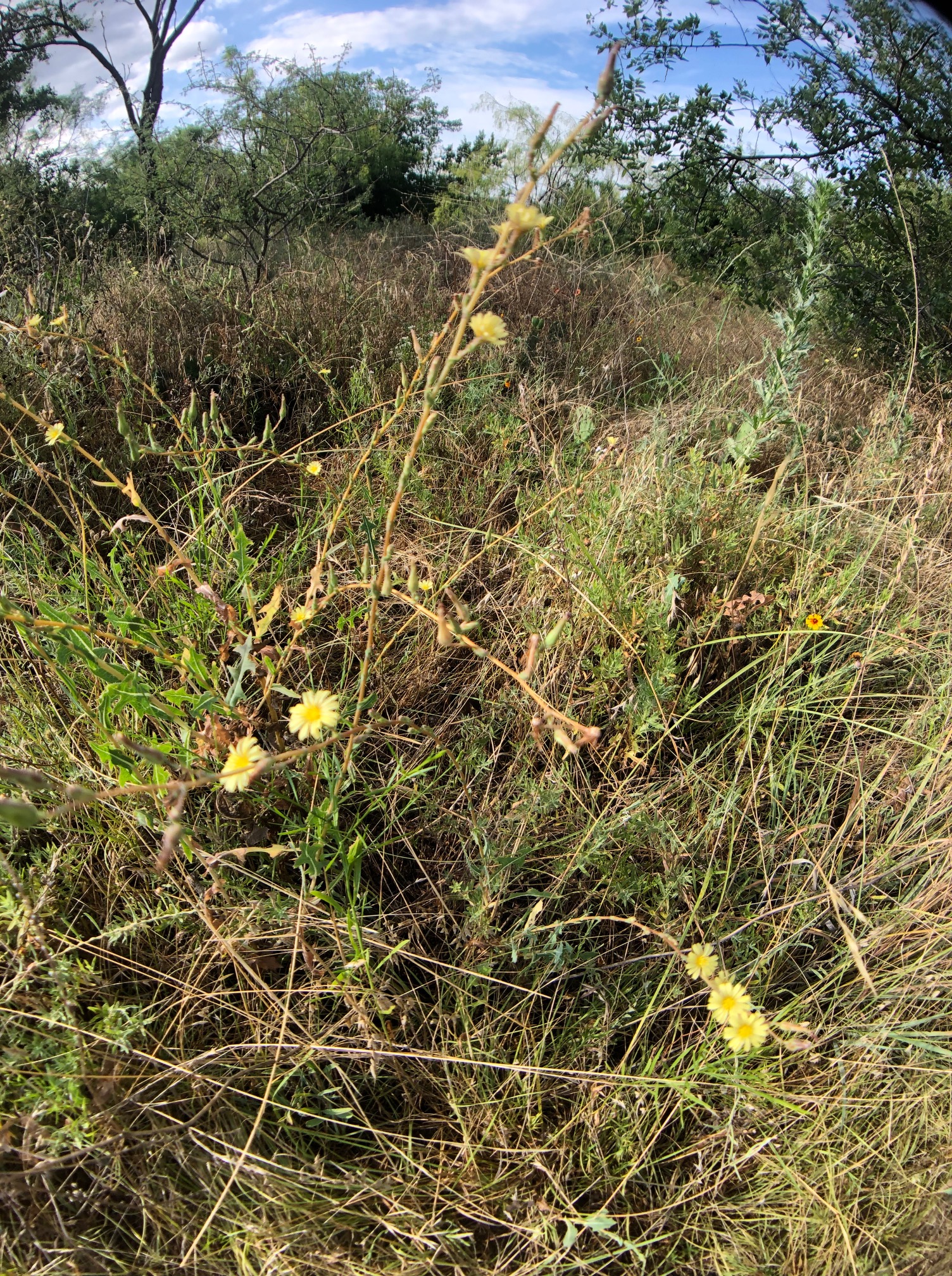
Posted in Plants
Tagged Lake Kirby Nature Park, Non-native, Sunflower Family, Texas Rolling Plains, Texas wildflower
Common Whitetail Dragonfly along the south section of the new hiking trail this weekend at Lake Kirby. You might wonder why this common name if there is no white tail? The explanation is that you are seeing the female here and it’s the males that have the prominent white tail. I did see males in the area but none would pose for a photo! Whitetails are among the most common dragonflies in Texas. The adult form is the dragonfly you see flying around, usually over water. However, dragonflies spend most of their lifetime in the water as immature nymphs (kind of the same as the caterpillar is to the adult butterfly). Dragonfly nymphs are voracious predators and eat worms, mosquito larvae, and tiny fish. The nymph will eventually crawl out of the water and sheds its skin to become an adult.
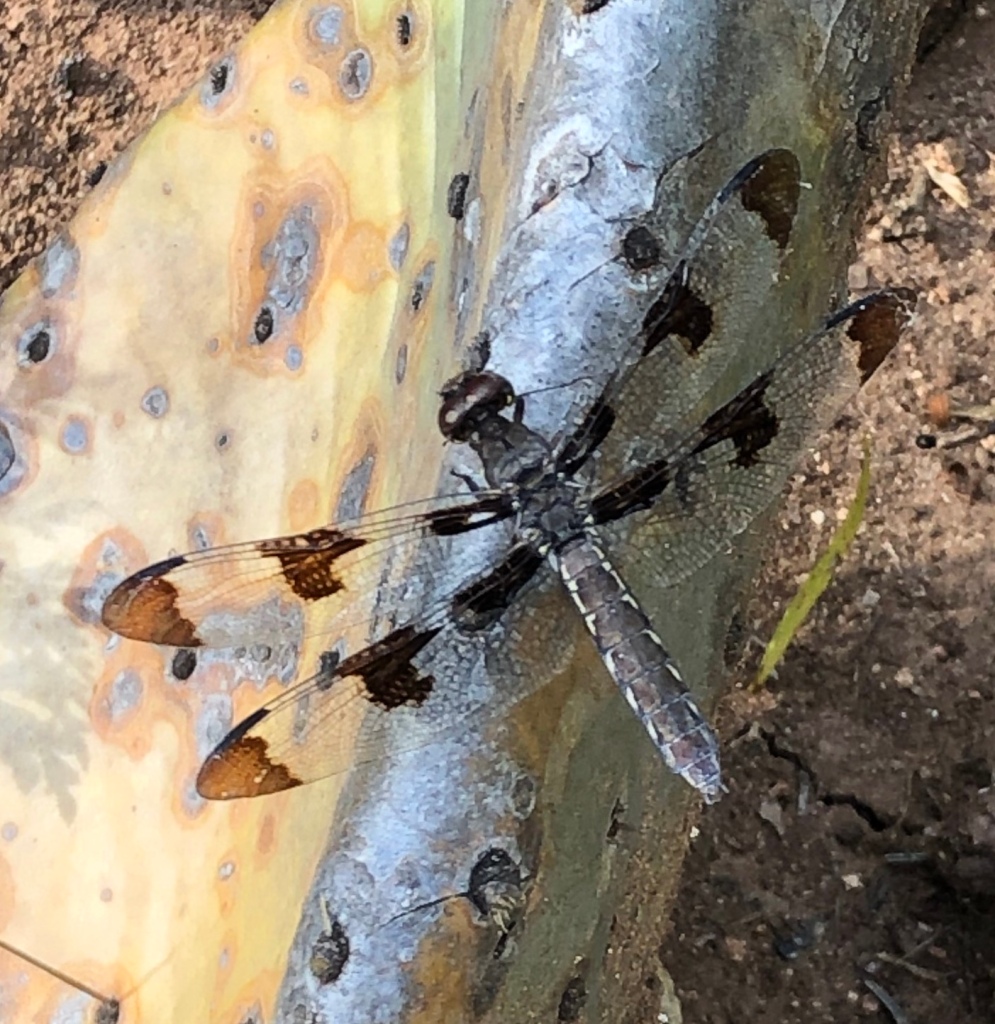
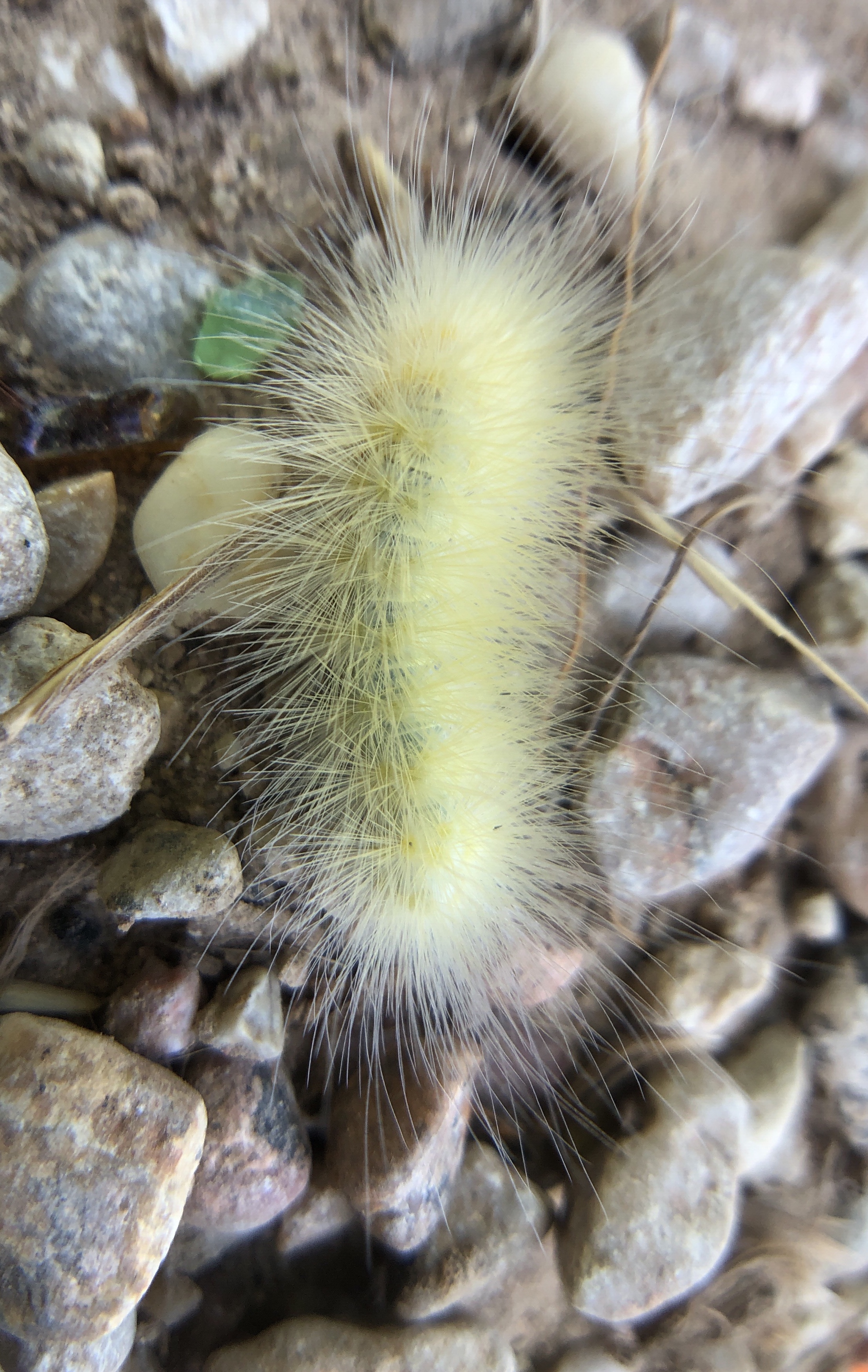
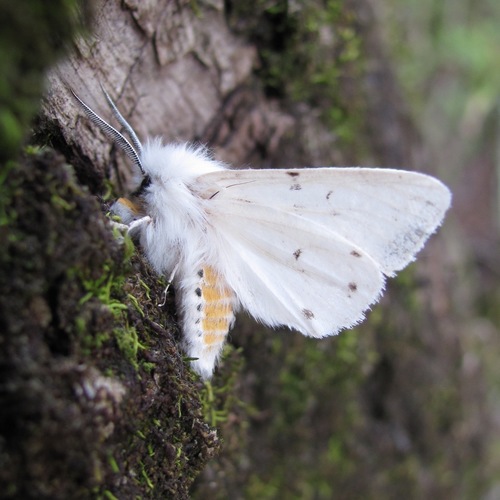
Yellow Woolly Bear caterpillar on gravel near the lake shore. As an adult it is known as a Virginia Tiger Moth. The caterpillars feed mostly on low growing plant leaves and are known to “skeletonize” by eating the soft tissue parts of the leaf and leaving only the thick veins or skeleton. What good are moths, other than being attracted to your porch lights? The caterpillars are a major food source for adult songbirds and their nestlings. The adult moth in flight is a food source for many species of bats that feed only while flying. Birds, such as swallows and nighthawks, that feed solely on the wing, depend on them for food. Some moths are nectar feeders and help pollinate flowers. Moths are pretty important!
Caterpillar image by #DoctorBot and adult moth image copyright Chuck Sexton. #LakeKirby
Posted in caterpillar, Insects, moth
I was out today in an urban wooded area on the south side of Abilene when I came across this attractive photo setting of an old hollow tree trunk with a perfectly (seemingly) placed climbing vine with 5 leaflets. The overall shape and color of the leaflets and other characteristics of the plant strongly suggest that this is poison ivy (Toxicodendron radicans). I have seen lots of T. radicans in my botanical lifetime–in all of its possible expressions: individual plants in the ground, a coarse, thick, high-climbing vine, and lots of variations in leaflet shape–but never any specimens with 5 leaflets. Shinner’s & Mahler’s Flora of North Central Texas notes that specimens sometimes (rarely) exhibit 5 leaflets. A botanical uncertainty for the next several weeks until flowers appear. Reproductive structures–like flower shape, number and placement of parts, etc–do not and cannot vary, and so will provide a definitive species ID for this specimen.
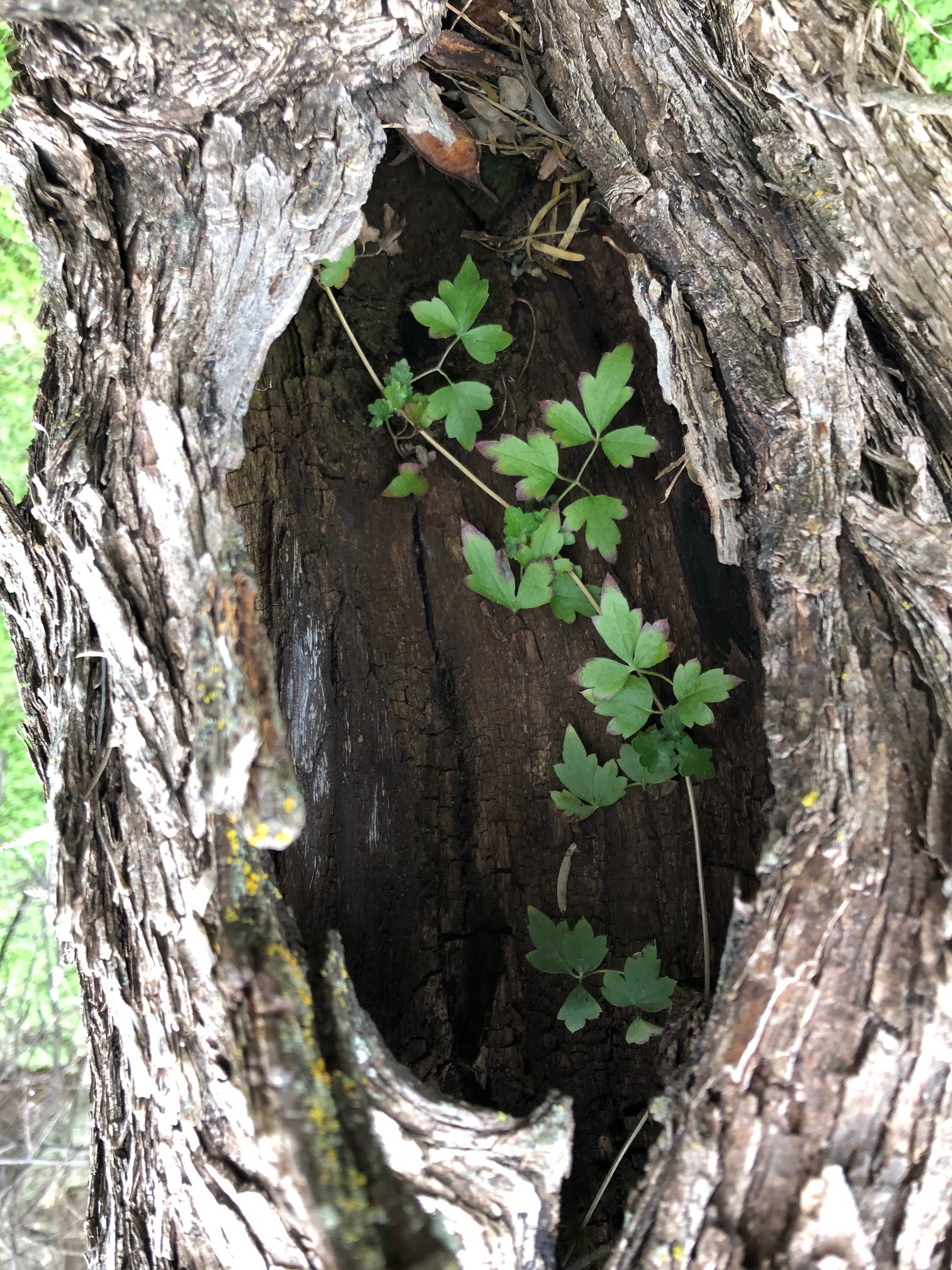
Posted in Lake Kirby Nature Park
Tagged botany, Lake Kirby Nature Park, poison ivy, Texas, Texas Rolling Plains